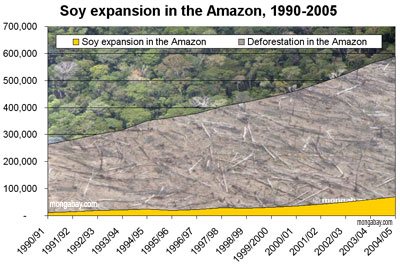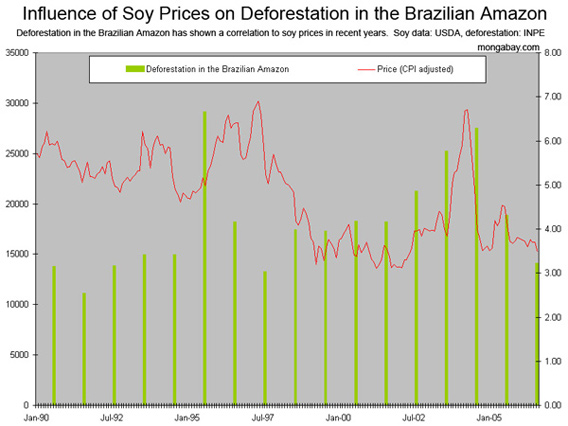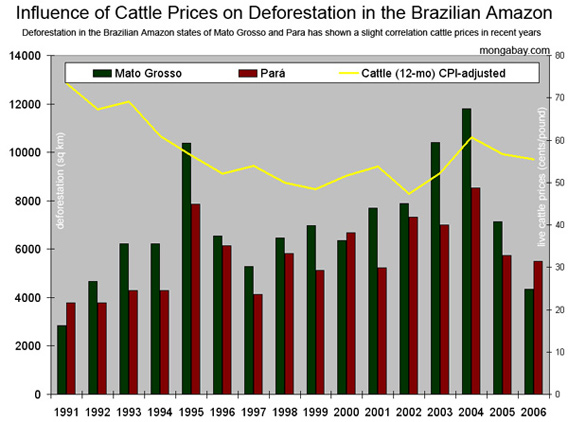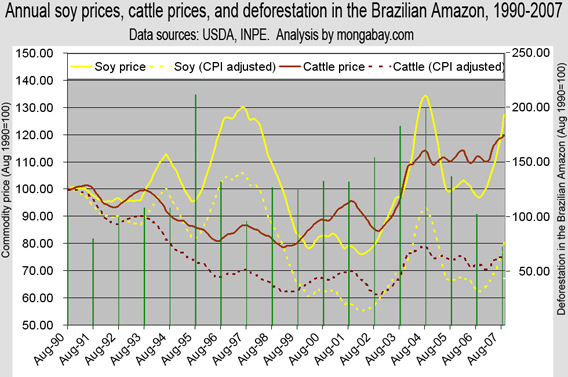Amazon deforestation jumps in the second half of 2007
Amazon deforestation jumps in the second half of 2007
mongabay.com
January 24, 2008
Deforestation in the Brazilian Amazon rose sharply in the second half of 2007 as a result of surging prices for beef and grain, said a top Brazilian environmental official.
Speaking in Brasilia, Gilberto Camara, head of the National Institute for Space Research (INPE), which tracks deforestation in the Amazon via satellite, said that 3,235 sq km of rainforest was destroyed between August and December 2007 and warned that the preliminary figure was likely to double as satellite images with higher resolution are analyzed.
“We’ve never before detected such a high deforestation rate at this time of year,” Camara told a news conference in Brasilia.
Most of the clearing occurred in November and December in the states of Mato Grosso, Para and Rondonia where most of the Amazon’s cattle and soy is produced.
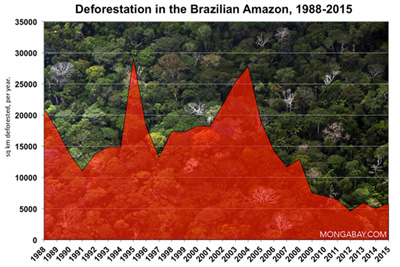
Deforestation in the Brazilian Amazon fell by more than 60 percent between 2004 and 2007.
Total deforestation and area of soybean cultivation across states in the Brazilian Amazon. Overall soybean cultivation makes up only a small portion of deforestation, though its role is accelerating. Further, soybean expansion and the associated infrastructure development and farmer displacement is driving deforestation by other actors. Note: some soybean farms are established on already degraded rainforest lands and neighboring cerrado ecosystems. Therefore it would be inappropriate to assume the area of soybean planting represents its actual role in deforestation. |
Deforestation in the Amazon is increasingly correlated with commodity prices. When grain and beef prices are high, large-scale agroindustry expands production by clearing large swathes of rainforest. At the same time, small landholders are displaced and move into frontier forest areas. Scientists say U.S. corn ethanol subsidies are indirectly driving deforestation by buoying the grain prices and thereby providing an impetus for forest conversion for agriculture in the Amazon as well as other parts of the world.
In an effort to slow deforestation, last month the Brazilian government announced it would crack down on the sale of farm products from illegally deforested areas in the Amazon. The presidential decree imposes fines and threatens credit access to landowners for buying or trading soy, beef, and other products produced on illegally deforested lands. Brazil will support the effort by creating a landholder registry and sending 700 more federal police to the region, parts of which have seen violent disputes over land.
The rise in deforestation comes after a three year decline in forest clearing. Between 2004 and 2007, deforestation rates in Brazil fell by more than sixty percent. Felling between
August 1, 2006 and July 30, 2007 was the lowest since the Brazilian government started tracking deforestation on a yearly basis in 1988.
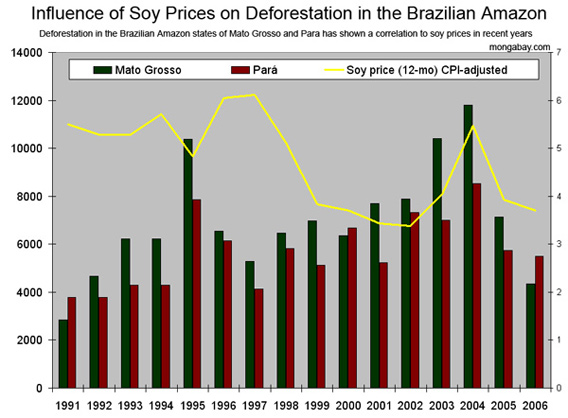
Influence of soy prices (CPI-adjusted, 12-month moving average) on deforestation in the Brazilian Amazon. Deforestation in the states of Mato Grosso and Para has shown a particularly strong correlation to soy prices in recent years. All figures in hectares (2.47 acres).
Influence of soybean prices (CPI-adjusted) on deforestation in the Brazilian Amazon. All figures in hectares (2.47 acres).
Influence of live cattle prices (CPI-adjusted, 12-month moving average) on deforestation in the Brazilian Amazon. While nearly two-thirds of Amazon clearing can be attributed to conversion for cattle pasture, deforestation in the states of Mato Grosso and Para has shown a only a slight correlation to cattle prices in recent years. This could be due, in part, to the use of cattle pasture for land speculation (land prices are rising faster than the value of cattle) and as a hedge against inflation and currency fluctuation. All figures in hectares (2.47 acres).
|
